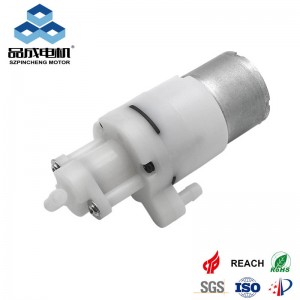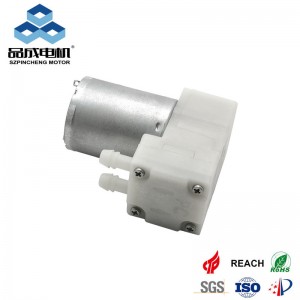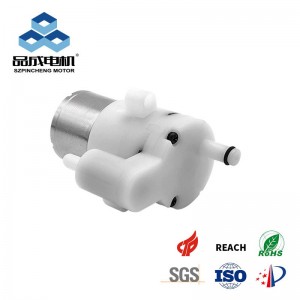Micro foam pumps are essential components in countless applications—from household appliances like coffee machines and small cleaning devices to industrial equipment such as car wash systems and medical disinfection tools. Their ability to generate consistent, fine foam makes them irreplaceable, but choosing the right voltage (12V or 24V) can drastically impact performance, energy efficiency, and lifespan. In this guide, we’ll break down the key differences between 12V Micro foam pumps and 24V micro foam pump models to help you decide which fits your needs.
1. Voltage & Power: The Foundation of Performance
Voltage directly influences a micro foam pump’s power output and operational stability:
-
12V Micro foam pumps: Designed for low-power scenarios, these pumps typically have a power range of 5W–15W. They operate on standard 12V DC power, which is easy to source from batteries (like car batteries) or small AC-DC adapters. This makes them ideal for projects where power supply is limited or portability is key.
-
24V micro foam pump: Built for higher-demand tasks, 24V models usually deliver 10W–30W of power. They require a 24V DC power source (common in commercial equipment or industrial setups) and excel at generating higher foam volume or maintaining consistent pressure in heavy-duty use.
Key takeaway: If your project needs low power and simple power access, 12V Micro foam pumps are more practical. For high-volume foam or continuous operation, 24V micro foam pump options are better suited.
2. Applicable Scenarios: Match the Pump to Your Use Case
The right micro foam pump depends on where and how you’ll use it:
When to Choose 12V Micro Foam Pumps
-
Household devices: Small coffee frothers, countertop dishwashers, or mini humidifiers—these devices don’t need high foam output and often rely on compact power sources.
-
Portable equipment: Camping gear (e.g., portable foam cleaners) or automotive accessories (e.g., small windshield foam washers) benefit from 12V’s compatibility with car batteries.
-
Low-load industrial tools: Light-duty medical devices (e.g., small-scale disinfection sprayers) or laboratory equipment that requires precise, low-volume foam.
When to Choose 24V micro foam pump
-
Commercial appliances: Large restaurant dishwashers, industrial-grade foam soap dispensers, or commercial car wash systems—these need consistent high foam flow for extended periods.
-
Heavy industrial use: Manufacturing lines (e.g., foam-based coating machines) or agricultural equipment (e.g., pesticide foam applicators) where 24V’s higher power ensures reliable performance.
-
Long-distance installations: In setups where power cables are long, 24V reduces current loss (thanks to Ohm’s Law), keeping the pump efficient.
3. Energy Efficiency & Lifespan
Both voltage options can be efficient, but their performance varies by load:
-
12V Micro foam pumps: Shine in low-load conditions. They use less energy when operating at 50%–70% of their maximum capacity, making them cost-effective for intermittent use. However, running them at full power for long periods can overheat the motor, shortening lifespan.
-
24V micro foam pump: More efficient at high loads. Their motors handle continuous full-power operation better, with less heat buildup. This makes them longer-lasting for commercial or industrial projects that run 8+ hours a day.
4. Installation & Maintenance
Ease of use matters for both DIY and professional setups:
-
12V Micro foam pumps: Simplier to install. They work with standard 12V adapters or batteries, no need for specialized wiring. Maintenance is also easier—replacement parts (like gaskets or impellers) are widely available and affordable.
-
24V micro foam pump: Require slightly more setup. You’ll need a 24V power supply (often sold separately) and may need to use thicker wires to handle higher current. Maintenance costs are slightly higher, but their durable motors mean fewer repairs overall.
How to Choose Between 12V and 24V Micro Foam Pumps
Follow these steps to make the right choice:
-
Assess your power source: Do you have access to 12V (e.g., car battery, small adapter) or 24V (e.g., commercial power system)? Choose a pump that matches to avoid extra power conversion costs.
-
Calculate foam needs: For low-volume, intermittent use (e.g., home coffee frothing), 12V works. For high-volume, continuous use (e.g., commercial car washes), 24V is better.
-
Consider portability: If your device needs to move (e.g., portable cleaner), 12V’s compatibility with small batteries is a plus.
-
Factor in long-term costs: 12V pumps have lower upfront costs, but 24V pumps save money on energy and repairs for heavy use.
Final Verdict: No “Better” Option—Only the Right One
There’s no universal “best” between 12V and 24V Micro foam pumps. 12V Micro foam pumps are perfect for small, portable, or low-power projects, while 24V micro foam pump models excel in high-demand, commercial, or industrial settings. The key is to match the pump’s voltage and power to your specific application, power source, and usage habits.
No matter which you choose, always opt for high-quality Micro foam pumps from reputable brands—this ensures consistent foam output, energy efficiency, and a long service life.
you like also all
Post time: Sep-26-2025




